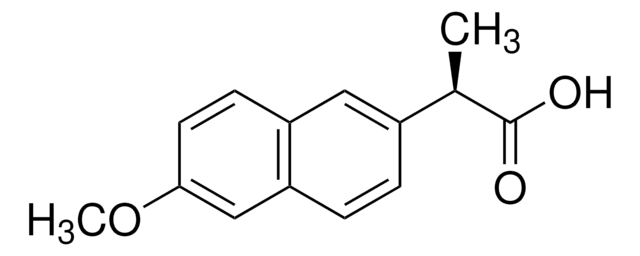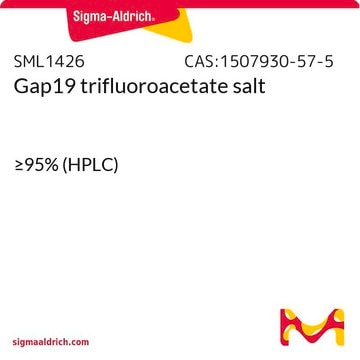M2319
Mefloquine hydrochloride
≥98% (HPLC), powder
Synonym(s):
(AS)-rel-a-(2R)-2-Piperidinyl-2,8-bis(trifluoromethyl)-4-quinolinemethanol monohydrochloride
About This Item
Recommended Products
Assay
≥98% (HPLC)
form
powder
storage condition
desiccated
color
white
solubility
DMSO: soluble 38 mg/mL
H2O: insoluble
SMILES string
Cl[H].[H][C@@]1(CCCCN1)[C@@H](O)c2cc(nc3c(cccc23)C(F)(F)F)C(F)(F)F
InChI
1S/C17H16F6N2O.ClH/c18-16(19,20)11-5-3-4-9-10(15(26)12-6-1-2-7-24-12)8-13(17(21,22)23)25-14(9)11;/h3-5,8,12,15,24,26H,1-2,6-7H2;1H/t12-,15+;/m1./s1
InChI key
WESWYMRNZNDGBX-YLCXCWDSSA-N
Looking for similar products? Visit Product Comparison Guide
Application
- to treat cochlear organotypic cultures with various doses to evaluate its role in cellular pathway involved in apoptosis
- in screening for in vitro antischistosomal activity
- in cytotoxicity assay of glioblastoma cells
Biochem/physiol Actions
Signal Word
Warning
Hazard Statements
Precautionary Statements
Hazard Classifications
Acute Tox. 4 Oral
Storage Class Code
11 - Combustible Solids
WGK
WGK 3
Flash Point(F)
Not applicable
Flash Point(C)
Not applicable
Personal Protective Equipment
Certificates of Analysis (COA)
Search for Certificates of Analysis (COA) by entering the products Lot/Batch Number. Lot and Batch Numbers can be found on a product’s label following the words ‘Lot’ or ‘Batch’.
Already Own This Product?
Find documentation for the products that you have recently purchased in the Document Library.
Customers Also Viewed
Our team of scientists has experience in all areas of research including Life Science, Material Science, Chemical Synthesis, Chromatography, Analytical and many others.
Contact Technical Service















